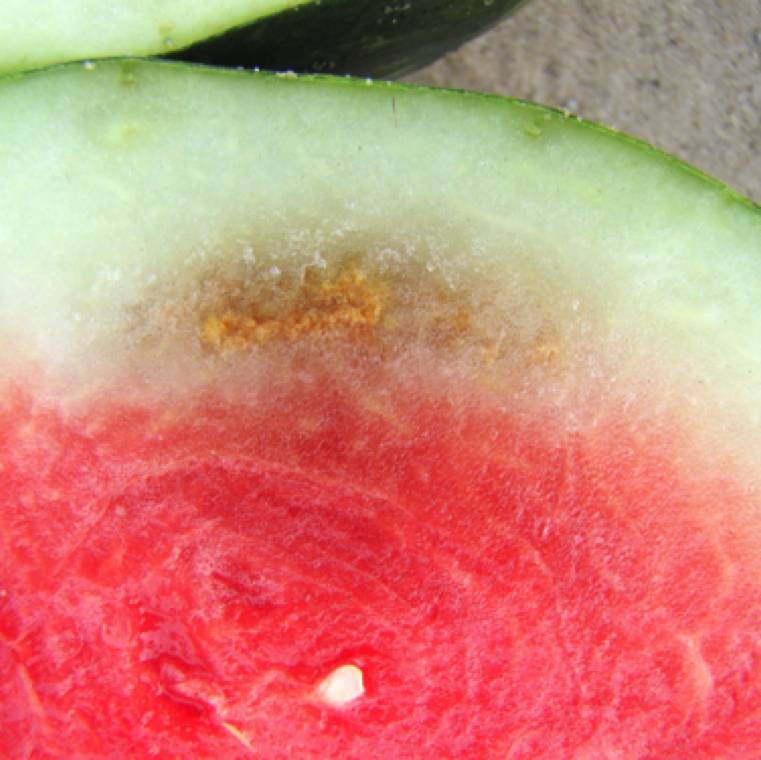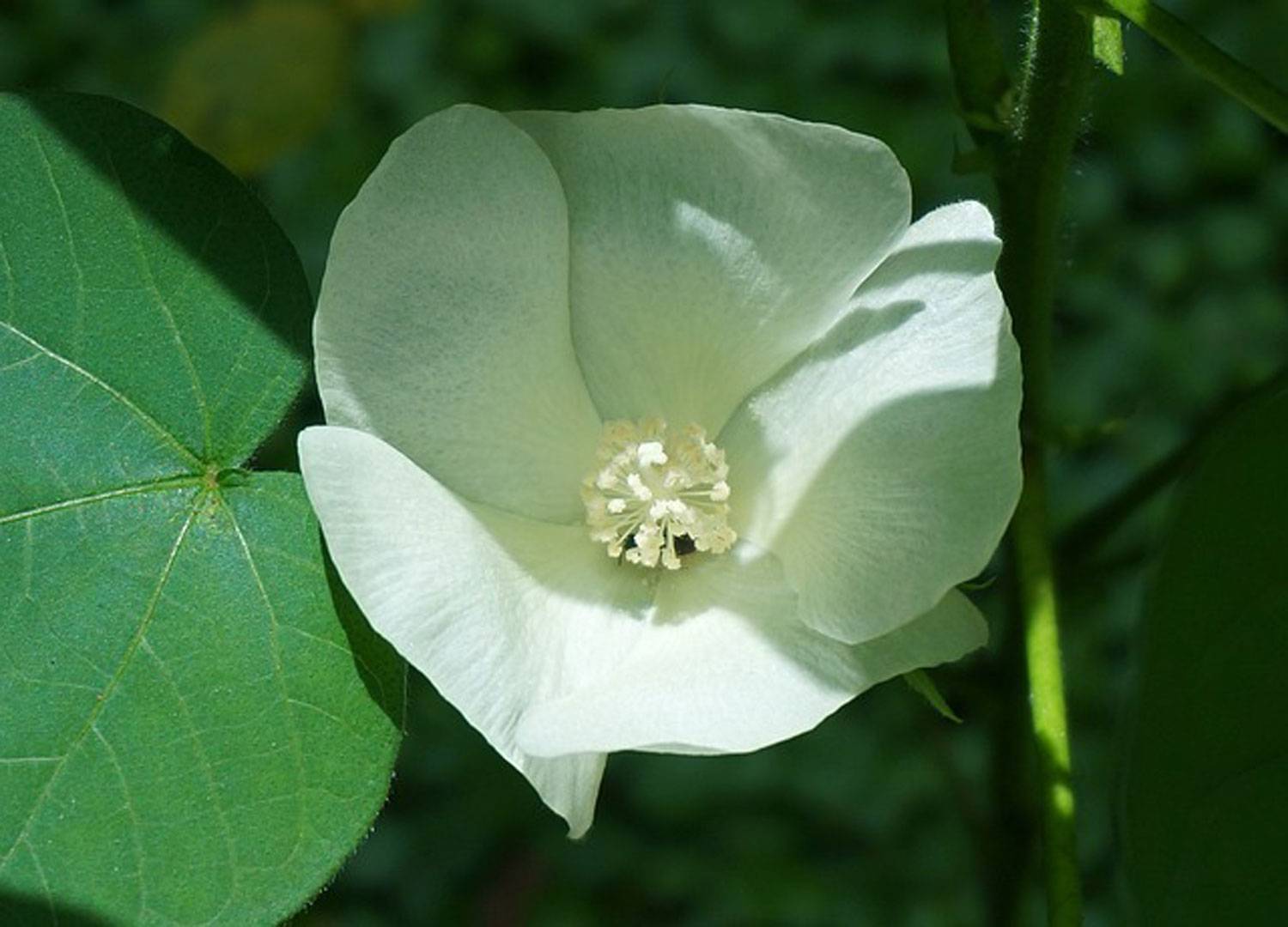Watermelon Rind Necrosis
Watermelon Rind Necrosis

Watermelon Rind Necrosis
Understanding Watermelon Rind Necrosis: Causes, Symptoms, and Effects
Watermelon rind necrosis is a disorder that primarily affects the internal structure of the watermelon rind, leading to significant economic loss for growers due to unmarketable fruit. The hallmark symptom of this condition is the internal vascular browning of the rind. While the fruits may appear normal externally or with slight distortions in shape, they are typically rejected because of the damage inside.
Key Symptoms:
- Internal Vascular Browning: The most characteristic feature of watermelon rind necrosis is browning along the internal vascular tissues of the rind.
- Unmarketable Fruits: Despite looking normal externally, affected fruits are often discarded due to the internal necrosis.
- Discoloration: Initial symptoms start as small, discolored areas on the rind, which are not confined to the region near the soil line but can occur anywhere on the rind. The affected areas are often light orange and dry.
- Necrotic Areas: Over time, the necrotic sections of the rind may turn dark brown, hard, and dry, with minimal extension into the flesh of the fruit. In some cases, the necrosis may be accompanied by water-soaked areas that reach into the flesh, but this is rare.
- Occasional Flesh Symptoms: Although the necrosis usually doesn't affect the flesh, some fruits may show yellowing or develop dry, orange spots inside.
Distinguishing from Other Diseases: Watermelon rind necrosis can sometimes be confused with symptoms caused by Squash Vein Yellowing Virus (SqVYV), a pathogen that also impacts watermelons. However, SqVYV typically causes additional symptoms, such as vine decline and leaf vein yellowing, which are absent in watermelon rind necrosis.
Unclear Causes: The exact cause of watermelon rind necrosis remains uncertain, with no definitive pathogen linked to the condition. However, environmental factors, stress, or nutritional imbalances may play a role in its development.
Impact on Marketability: While the disorder does not significantly affect watermelon plants or leaves, it renders fruits unmarketable, as severe cases may result in the rejection of entire truckloads. Even though the necrosis rarely extends to the flesh, its presence in the rind is enough to downgrade the fruit's quality.
Effective management and early detection of watermelon rind necrosis are crucial to minimizing losses, but due to the unclear causes, there are limited prevention strategies currently available.
Blog
Explore Our Blog






About Us
Welcome to Agriplaza
Welcome to Agriplaza. India's first and only comprehensive digital platform dedicated to agriculture and farmers. Explore widest range of related data our figures speaks a lot.
634728
Visitors
239
Diseases
131
Pests




